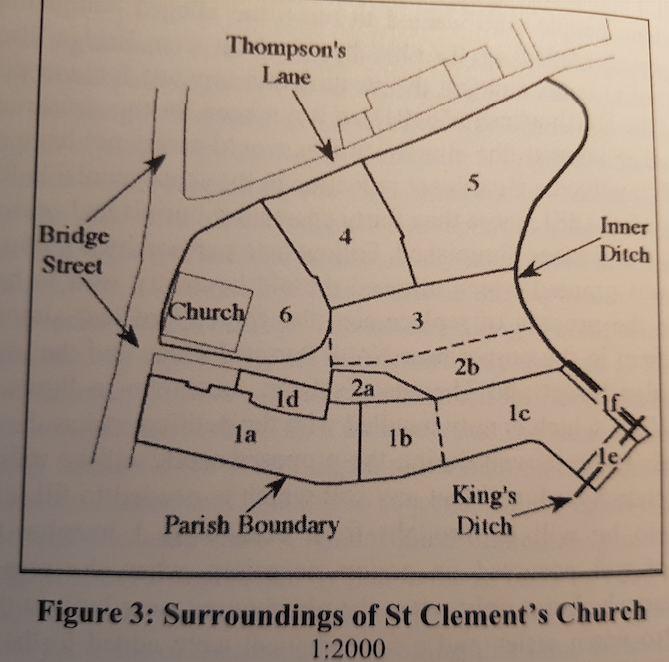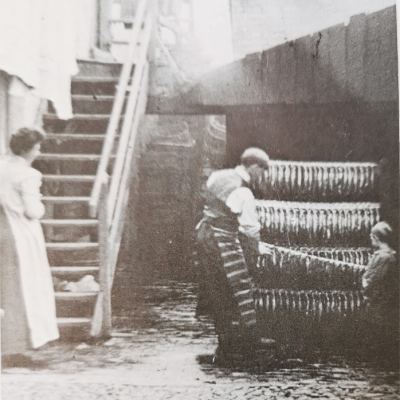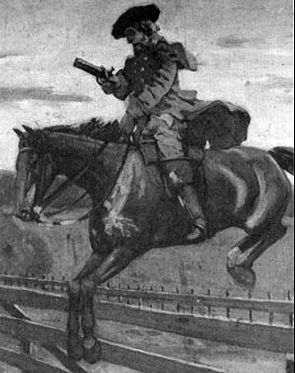Search by topic
- archaeology
- Building of Local Interest
- charity
- church
- crime
- dressmaker
- fire
- Great Eastern Railway
- Listed building
- Mapping Relief
- medieval
- oral history
- poverty
- Public House
- Rattee & Kett
- Religious House
- Roman
- scholar
- school
- Then and Now
- tudor
- women
- work
- world war one
- world war two
Search by text
 Surroundings of St Clement Church
Surroundings of St Clement ChurchClement Hostel
History of Clement Hostel
From around 1350 to 1567 a strip of land along the southern boundary of the parish (areas (1a), (1b), (1c) and part of (1d) on the map, was occupied by a hostel for jurists known as Clement House. T E Faber in his Intimate History of St Clement’s lists documents that provide evidence of the hostel’s existence and character, but he was unable to discover who had founded the hostel, when and why. (see p.42) It is known that the hosel had a hall, a brewhouse, a principal and a chaplain, but not a chapel because the students worshipped at the church next door. This caused a major problem in 1528 when the priest William Massye died; the churchwardens and the hosel were rival factions in the appointment of a new priest, a contest which resulted in violence including knives and daggers. The dispute was dealt with by Cardinal Wolsey and then Sir Thomas More in turn but the eventual outcome is not recorded.
William Hodson took over the lease of the site in 1567. At this time the plot was split so that northern section could be developed by the town as a workhouse for the poor. However, such a project seems never to have actually materialised. Instead approximately 7 almshouses were built on the area marked as (1d). The almshouses are first mentioned in a lease of 1610 granted to Thomas Cropley and then his widow Ann. It seems likely that the Cropley family as well-to-do brewers paid for and maintained the almshouses.
John More (a chairmaker who was one of the town treasurers in 1665) held the main lease during the hearth tax period. he himself lived on the west side of Bridge Street but also compiled the tax entris fo Clement Hostel. there were at least 26 hearths in all, suggesting the building was already being used for residential accommodation.
Elizabeth Antrobus’s lease of 1773 includes a sketch plan which correspond fairly closely to the 1886 plan. It shows the relative position of the Blackmoor Head.
The 1825 plan is based on sale particulars of that year when 23 out of 45 lots were on offer. Lot 37 was the Blackmoor Head; lot 38, which shared part of the same building, was an ‘old accustomed Liquor Shop’ known as the Cock and Magpie and Mrs Lawrence who ran it had a dwelling house with additional rooms over the gateway. Lot 36 was occupied by a saddler and is described in the particulars as offering commercial opportunities of a particularly attractive nature.
Contribute
Do you have any information about the people or places in this article? If so, then please let us know using the Contact page or by emailing capturingcambridge@
License
This work is licensed under CC BY-NC-SA 4.0












